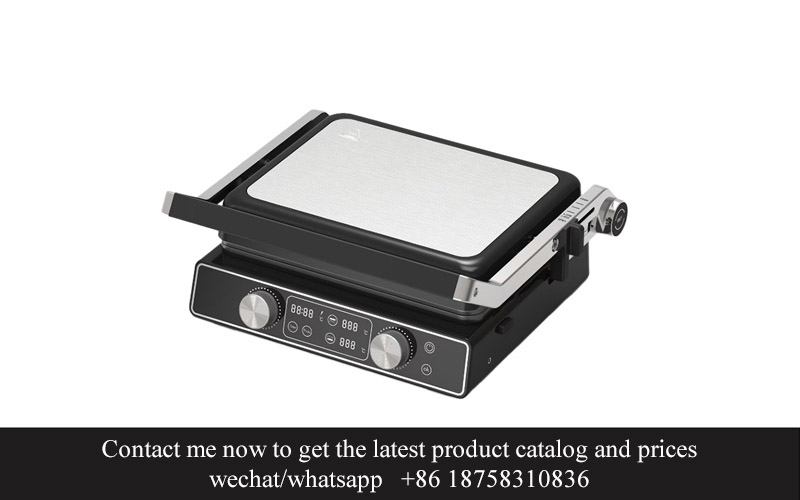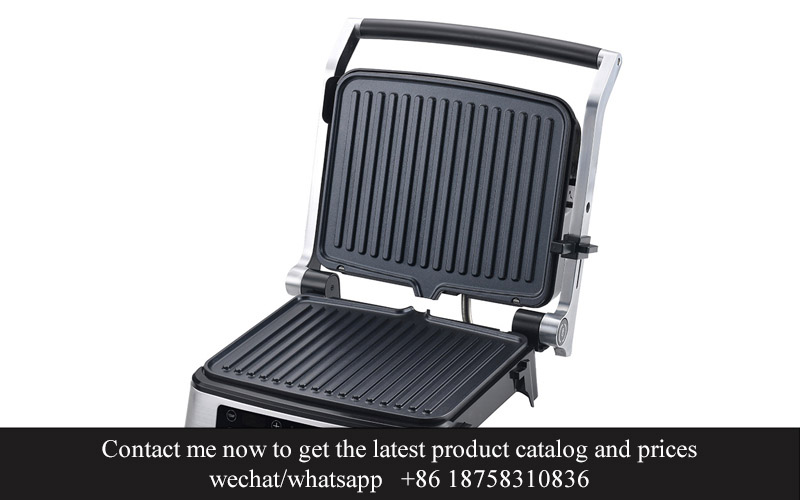Address
304 North Cardinal
St. Dorchester Center, MA 02124
Work Hours
Monday to Friday: 7AM - 7PM
Weekend: 10AM - 5PM
Address
304 North Cardinal
St. Dorchester Center, MA 02124
Work Hours
Monday to Friday: 7AM - 7PM
Weekend: 10AM - 5PM

In the ever-evolving world of e-commerce, small appliance drop shipping from China has emerged as a dynamic and lucrative business model. It’s a strategy that allows entrepreneurs to tap into a vast market of kitchen appliances without the need for inventory or storage space. This article delves into the intricacies of this market, offering insights, innovative product ideas, and real-life success stories to inspire and guide those looking to enter this thriving niche.
The digital wave has swept through the retail landscape, transforming how consumers shop and how businesses operate. At the forefront of this shift is the rise of small appliance drop shipping, a model that’s redefining the e-commerce landscape. Imagine a world where you can offer a vast array of kitchen gadgets without the need for inventory or warehousing. That’s the reality drop shipping is bringing to the market.
Gone are the days when e-commerce was limited to large, high-profile items. Today, even the smallest kitchen appliances are finding their way onto online store shelves, thanks to the convenience and scalability of drop shipping. From toasters to blenders, the market for small appliances has expanded exponentially, and with it, the opportunity for entrepreneurs to tap into a lucrative niche.
One of the key factors fueling this growth is the consumer’s insatiable appetite for convenience. People are looking for ways to simplify their lives, and that includes having a one-stop shop for all their kitchen needs. Drop shipping allows entrepreneurs to cater to this demand by offering a diverse range of products without the logistical hurdles of traditional retail.
The ease of entry is another driving force behind the rise of small appliance drop shipping. Setting up a drop shipping business requires minimal upfront investment, as there’s no need to purchase inventory. Instead, you act as a middleman, connecting customers with manufacturers who handle the production and shipping. This streamlined process has democratized the e-commerce space, making it accessible to virtually anyone with an internet connection.
But it’s not just about convenience and accessibility; there’s a strategic advantage to be had in the small appliance market. The industry is dynamic, with trends shifting rapidly. By specializing in small appliances, you can stay on top of these trends and offer the latest innovations to your customers. This agility allows you to adapt quickly to changing consumer preferences, which is crucial in the fast-paced world of e-commerce.
Moreover, the global reach of small appliance drop shipping is unparalleled. By sourcing products from China, a hub for manufacturing, you can access a vast array of high-quality appliances at competitive prices. The sheer volume of suppliers and the variety of products available in China make it a treasure trove for entrepreneurs looking to diversify their offerings.
In terms of market trends, we’re seeing a surge in demand for smart kitchen appliances. These devices, equipped with technology that allows them to connect to the internet and control other smart home devices, are becoming increasingly popular. Think of smart ovens that can be controlled via a smartphone or blenders that can be programmed for specific recipes. The integration of technology into everyday kitchen tools is not only convenient but also exciting for consumers.
However, as with any business venture, it’s important to conduct thorough market research. Understanding the demand for different types of small appliances, their price points, and the competitive landscape is essential. Data-driven insights can help you make informed decisions about which products to offer and how to position them in the market.
The logistics of small appliance drop shipping from China are also a critical consideration. Ensuring that products are shipped efficiently and arrive at the customer’s doorstep in perfect condition is paramount. Establishing strong relationships with reliable suppliers and logistics partners is key to maintaining a high level of customer satisfaction.
In conclusion, the rise of small appliance drop shipping from China is a testament to the evolving e-commerce landscape. It’s a model that empowers entrepreneurs to enter the market with minimal risk and offers customers a wide range of innovative products. By staying attuned to market trends and leveraging the advantages of drop shipping, businesses can thrive in this exciting and rapidly growing sector.

In the ever-evolving world of e-commerce, the rise of small appliance drop shipping has emerged as a revolutionary trend. Among the myriad of options available, choosing to drop ship small appliances from China stands out for several compelling reasons. Here’s a closer look at why this choice is becoming increasingly popular among entrepreneurs and retailers alike.
The sheer scale of China’s manufacturing industry is unmatched, and it’s this vast production capacity that makes sourcing small appliances from China an attractive proposition. With a plethora of manufacturers and suppliers, you can find a wide range of products, from kitchen gadgets to personal care devices, at competitive prices.
Cost savings are a significant draw for those considering drop shipping from China. The labor costs in China are generally lower than in many other countries, which translates to lower production costs for small appliances. This cost advantage can be passed on to consumers, making your products more affordable and competitive in the market.
The diversity of products available in China is staggering. Whether you’re looking for trendy kitchen gadgets or classic household items, China’s market offers a vast array of options. This variety allows you to cater to different customer preferences and market demands, ensuring that you can find the right product for your target audience.
China’s reputation for quality is well-earned. Despite the competitive pricing, Chinese manufacturers are known for producing high-quality goods. This quality assurance is crucial for drop shipping, as customers expect their purchases to be reliable and durable. The reputation for quality can help build trust with your customers, leading to repeat business and positive reviews.
The infrastructure in China is robust, supporting efficient production and distribution. With advanced supply chain management and logistics, you can expect timely delivery of your products. This reliability is essential for maintaining customer satisfaction and ensuring that your e-commerce business runs smoothly.
Sourcing from China also means you have access to cutting-edge technology and innovative designs. Chinese manufacturers are often at the forefront of new product development, and this can give your business a competitive edge. By offering the latest and greatest in small appliances, you can attract tech-savvy consumers who are always on the lookout for the next big thing.
The language barrier might be a concern for some, but it’s not insurmountable. There are numerous language services and intermediaries available to facilitate communication between you and Chinese suppliers. These services can help ensure that your product specifications are accurately conveyed and that any issues are resolved promptly.
Another advantage is the flexibility that drop shipping offers. Since you don’t need to hold inventory, you can test different products and market segments without the risk of overstocking. This trial-and-error approach allows you to refine your product offerings and business model without a significant financial investment.
China’s e-commerce market is also a goldmine of consumer insights. By sourcing products from China, you gain access to a wealth of data and trends that can inform your business strategy. This market intelligence can help you identify emerging trends, anticipate customer needs, and stay ahead of the competition.
Lastly, the environmental benefits of drop shipping from China should not be overlooked. By reducing the need for shipping large quantities of goods, you’re minimizing the carbon footprint associated with traditional retail. This eco-friendly approach aligns with the growing consumer demand for sustainable business practices.
In conclusion, the decision to opt for small appliance drop shipping from China is a strategic move that leverages the country’s strengths in manufacturing, cost-effectiveness, and product diversity. With careful planning and the right partnerships, this approach can open up a world of opportunities for your e-commerce business.

The world of e-commerce has seen a surge in drop shipping, and when it comes to sourcing small appliances, China has emerged as a top destination for entrepreneurs and businesses alike. Here are several key advantages of opting for drop shipping small appliances from China:
Cost-Effective Production: China is renowned for its cost-efficient manufacturing processes. The sheer scale of the production facilities allows for economies of scale, which means lower production costs per unit. This cost advantage can be passed on to customers, offering competitive pricing in the market.
Vast Product Range: China boasts a vast array of small appliances, from kitchen gadgets to personal care items. This extensive variety means that drop shippers can cater to a diverse range of consumer needs and preferences, ensuring a broad appeal.
Quality Control: Despite the competitive pricing, Chinese manufacturers have made significant strides in quality control. With strict regulations and a growing focus on international standards, the quality of small appliances from China has improved dramatically.
Rapid Production and Delivery: China’s manufacturing infrastructure is highly developed, allowing for quick production cycles. This means that once an order is placed, it can be processed and shipped out at a rapid pace, ensuring timely delivery to customers worldwide.
Access to Advanced Technology: Many Chinese appliance manufacturers are at the forefront of technological innovation. By drop shipping from China, businesses can gain access to cutting-edge products that may not be available in other markets, giving them a competitive edge.
Skilled Labor: The labor force in China is highly skilled and experienced in producing small appliances. This expertise ensures that the products are made to the highest standards, with attention to detail and functionality.
Diverse Payment Options: Chinese suppliers often offer a variety of payment methods, including PayPal, credit cards, and direct bank transfers. This flexibility makes it easier for drop shippers to manage transactions and streamline the supply chain.
Strong Supply Chain: China has a robust and efficient supply chain that can handle large volumes of orders without delay. This reliability is crucial for drop shipping, where timely delivery is key to customer satisfaction.
Language and Cultural Barriers: While some may view language and cultural differences as obstacles, they can also be leveraged. Chinese manufacturers often have experience working with international clients and can navigate these barriers effectively.
Marketing and Advertising Opportunities: China is a hub for marketing and advertising. By sourcing small appliances from China, businesses can tap into the expertise of local marketing agencies and leverage the latest digital marketing strategies to reach a global audience.
Environmental Considerations: Chinese manufacturers are increasingly focusing on sustainable practices. This means that drop shippers can source environmentally friendly small appliances that align with the growing demand for eco-conscious products.
Scalability: Drop shipping from China allows businesses to scale their operations quickly and efficiently. With no need to hold inventory, businesses can easily adjust their product offerings based on market demand, reducing the risk of overstocking.
After-Sales Support: Many Chinese suppliers offer comprehensive after-sales support, including warranty services and customer care. This support can enhance the customer experience and build trust in the brand.
Innovation and Customization: Chinese manufacturers are known for their willingness to innovate and customize products. Drop shippers can work closely with suppliers to create unique items that stand out in the market.
Export Experience: China has years of experience in exporting products globally. This means that the logistics and export processes are well-established and can be trusted to handle international shipping with ease.
By taking advantage of these benefits, drop shippers can tap into a vast market with a wide range of small appliances, all while enjoying the flexibility and cost savings that drop shipping offers.

The kitchen appliance industry has seen a remarkable evolution, driven by technological advancements and shifting consumer preferences. Here’s a deep dive into the current trends and insights shaping this dynamic sector.
Consumer Demand for Smart and Energy-Efficient AppliancesModern consumers are increasingly seeking smart kitchen appliances that not only simplify daily tasks but also contribute to energy savings. From smart ovens that can be controlled via smartphones to energy-efficient dishwashers, the market is responding to these desires with innovative products that offer convenience and sustainability.
The Rise of Health and Wellness-Focused ProductsAs awareness of health and wellness grows, kitchen appliances that cater to these concerns are becoming more popular. This includes everything from high-speed blenders that promise to break down ingredients into their most nutritious forms to air fryers that allow for healthier frying options. Brands are also focusing on materials and components that are free from harmful chemicals.
Customization and PersonalizationToday’s consumers want appliances that not only perform well but also reflect their personal style. The kitchen appliance industry is responding by offering a wider range of colors, finishes, and design options. Customization extends beyond aesthetics, with some companies offering appliances that can be tailored to specific kitchen layouts or user preferences.
E-commerce and Direct-to-Consumer SalesThe rise of e-commerce has transformed how kitchen appliances are sold. Many manufacturers are now selling directly to consumers, bypassing traditional retail channels. This direct-to-consumer approach allows for more competitive pricing and a direct line of communication between the brand and the consumer, leading to better product development and customer service.
Globalization and Cross-Cultural InfluencesThe kitchen appliance industry is becoming more global, with cross-cultural influences shaping product design and marketing strategies. For instance, Asian brands are bringing their innovative cooking techniques and appliances to the global market, while Western brands are incorporating Asian design elements into their products to cater to a more diverse consumer base.
Sustainability and Eco-Friendly PracticesEnvironmental consciousness is driving the industry towards more sustainable practices. Manufacturers are exploring eco-friendly materials, reducing packaging waste, and developing appliances that have a lower carbon footprint throughout their lifecycle. This trend is not only beneficial for the planet but also appeals to environmentally conscious consumers.
The Importance of Branding and StorytellingBranding has never been more crucial in the kitchen appliance industry. Brands are investing in storytelling to connect with consumers on a deeper level, sharing the values and heritage behind their products. This narrative approach helps create a strong brand identity and fosters customer loyalty.
Technological Integration and ConnectivityAppliances are becoming more connected, with features like Wi-Fi connectivity, voice control, and the ability to integrate with other smart home devices. This technological integration not only enhances the user experience but also opens up new possibilities for home automation and energy management.
Market Saturation and CompetitionDespite the growth, the kitchen appliance industry is facing increased competition. This saturation has led to a more fragmented market, with niche players finding their place. As a result, differentiation through innovation, unique value propositions, and strong branding is becoming even more important for brands to stand out.
Regulatory Compliance and Safety StandardsConsumer safety remains a top priority, and the kitchen appliance industry is subject to strict regulatory standards. Manufacturers must ensure their products comply with safety regulations to gain consumer trust and avoid potential legal issues.
The kitchen appliance industry’s journey is marked by continuous innovation and adaptation to changing consumer needs. As the market evolves, brands that can stay ahead of these trends and insights will be well-positioned to capture the ever-growing demand for modern, efficient, and sustainable kitchen solutions.

In the ever-evolving kitchen appliance market, innovation is key to standing out. Here are some unique product ideas that could resonate with consumers looking for something fresh and functional:
Smart Cookware with AI IntegrationGone are the days of guessing the perfect cooking time. Imagine cookware that learns your preferences and cooking habits, adjusting heat settings and timers to ensure every dish is cooked to perfection. With AI-driven sensors, this smart cookware could also monitor food quality and nutrition, providing real-time feedback and health insights.
Energy-Efficient Solar-Powered Kitchen GadgetsAs sustainability becomes a greater concern, solar-powered kitchen gadgets offer a green alternative. From solar-powered blenders that harness the sun’s energy to charge, to solar ovens that can cook meals without electricity, these eco-friendly appliances cater to environmentally conscious consumers.
Compact and Modular Kitchen AppliancesIn smaller living spaces, every inch counts. Modular kitchen appliances that can be easily disassembled and reconfigured offer flexibility and space-saving solutions. Think of a countertop oven that can be tucked away when not in use or a multifunctional kitchen island that can be customized to include a fridge, stove, and sink.
Voice-Controlled Kitchen RobotsThe rise of smart homes has led to a demand for voice-controlled kitchen assistants. These kitchen robots could handle tasks like chopping, mixing, and even cooking, all at the command of a simple voice command. They could be equipped with advanced AI to learn and adapt to your cooking style over time.
Edible Waste Composting SystemReducing food waste is a critical issue. An innovative kitchen appliance that turns your organic waste into compost could be a hit. This system would use a combination of heat, enzymes, and a small amount of electricity to break down waste and convert it into nutrient-rich compost, which can then be used to fertilize your garden.
Interactive Kitchen Appliance DisplaysKitchen appliances that come with interactive displays could revolutionize cooking. Imagine a fridge that shows recipe suggestions based on what you have at home, or an oven that provides cooking tips and video tutorials. These smart interfaces would make cooking more engaging and educational.
Wearable Kitchen ToolsFor those who prefer hands-free cooking, wearable kitchen tools could be the next big thing. Imagine a chef’s hat with built-in sensors that measure temperature and humidity, or a smart apron that keeps track of cooking times and alerts you when a dish is ready. These gadgets would allow chefs to move around the kitchen with greater freedom.
Energy-Saving Smart FridgeSmart fridges are already popular, but an energy-saving version could be a game-changer. Equipped with advanced insulation and energy-efficient compressors, this fridge would not only keep your food fresh but also significantly reduce your electricity bills.
Self-Cleaning CookwareSelf-cleaning cookware is a dream for many, but imagine cookware that not only cleans itself but also communicates with your smart home system to order replacement parts when they’re due for a refresh. This could be a game-changer for those who want to minimize cleaning time and effort.
Multi-Functional Smart KettleA smart kettle that can not only boil water but also steam vegetables, defrost frozen food, and even make tea or coffee at the touch of a button could be a hit. With customizable settings and the ability to connect to your smartphone for remote control, this kettle would be a versatile addition to any kitchen.
These unique product ideas aim to blend technology, sustainability, and convenience, catering to the evolving needs and desires of consumers in the kitchen appliance industry.

In the vast landscape of global manufacturing, China stands out as a powerhouse for small appliance production. Sourcing high-quality small appliances from China can be a game-changer for your business, but it requires a strategic approach. Here are some key steps and considerations to ensure you’re getting the best products for your market.
Understanding the MarketTo start, familiarize yourself with the market trends and demands. Research which types of small appliances are in high demand and which features consumers are looking for. This knowledge will guide you in selecting the right products to source from Chinese manufacturers.
Building RelationshipsNetworking is crucial when sourcing from China. Attend trade shows, join industry forums, and connect with potential suppliers through B2B platforms. Building a strong relationship with your supplier can lead to better pricing, improved communication, and a smoother supply chain process.
Quality ControlQuality is paramount in the small appliance industry. When sourcing from China, it’s essential to have a robust quality control process in place. This might involve working with a third-party inspection service to ensure that the products meet international standards. Look for suppliers who already have a quality control system in place, as this can save you time and money.
Sampling and PrototypingBefore placing a large order, request samples to assess the quality of the products. This allows you to evaluate the design, functionality, and durability of the appliances. If necessary, work with your supplier to create a prototype that aligns perfectly with your specifications.
Pricing and NegotiationPricing is a significant factor in sourcing from China. However, it’s important to balance cost savings with quality. Negotiate with suppliers to get the best possible price while maintaining the integrity of the product. Remember that the lowest price isn’t always the best deal if it compromises quality.
Supply Chain ManagementManaging the supply chain is critical to ensure timely delivery. Establish clear communication channels with your supplier to track the progress of your order. Consider factors like lead times, shipping methods, and customs clearance to avoid delays.
Documentation and ComplianceNavigating the complexities of international trade requires thorough documentation. Ensure that all necessary export and import documents are in order to comply with regulations. This includes certificates of origin, quality control reports, and compliance with international safety standards.
Payment TermsSecure payment terms that protect both you and your supplier. Consider using escrow services or payment platforms that offer dispute resolution. This can help mitigate risks associated with non-payment or late payments.
Regular Audits and Follow-UpOnce you’ve established a relationship with a supplier, conduct regular audits to maintain the quality of the products. Follow up on any issues promptly to prevent future problems. A good supplier will be willing to work with you to resolve any concerns that arise.
Local PartnershipsConsider partnering with local companies in China to facilitate your sourcing process. Local partners can help with market research, language translation, and logistical support, making the process smoother and more efficient.
Technology and InnovationStay abreast of technological advancements in the small appliance industry. China is known for its innovation, and being aware of the latest trends can give you a competitive edge. Look for suppliers who are investing in research and development to offer cutting-edge products.
Long-Term RelationshipsBuilding a long-term relationship with your Chinese supplier can lead to numerous benefits. This includes preferential pricing, exclusive product lines, and the ability to adapt to market changes more effectively.
Remember, sourcing high-quality small appliances from China is a journey that requires patience, attention to detail, and a commitment to quality. By following these steps and remaining vigilant, you can establish a successful sourcing strategy that benefits your business.

Understanding the market landscape is crucial for any business, and this is especially true in the competitive world of kitchen appliances. Market research and data analysis play a pivotal role in guiding decisions, predicting trends, and ensuring that products and services align with consumer needs. Here’s a deeper look into why these practices are so important:
The Power of Consumer InsightsConsumer preferences are constantly evolving, and staying ahead of these changes is key to success. Market research allows businesses to tap into consumer insights, revealing what features, designs, and functionalities are most sought after. By analyzing data, companies can identify emerging trends and adapt their offerings accordingly, ensuring that their small appliances resonate with the target audience.
Predicting Market TrendsData analysis provides a crystal ball of sorts, allowing businesses to predict future market trends. By examining historical sales data, consumer behavior, and market dynamics, companies can forecast which types of small appliances are likely to gain popularity. This foresight is invaluable for inventory management, product development, and strategic planning.
Optimizing Product DevelopmentThe kitchen appliance industry is marked by rapid innovation. By leveraging market research and data analysis, companies can optimize their product development processes. This means creating appliances that not only meet current demands but also have the potential to become future classics. For instance, data might show a growing interest in energy-efficient appliances, leading to the development of eco-friendly models.
Competitive AnalysisIn a crowded market, knowing where you stand against competitors is essential. Market research and data analysis help businesses assess their competitive position by analyzing competitors’ offerings, pricing strategies, and marketing tactics. This knowledge can be used to differentiate products, set competitive prices, and craft effective marketing campaigns.
Customer SegmentationNot all consumers are the same, and tailoring products to specific segments can significantly boost sales. Data analysis allows for customer segmentation, enabling businesses to understand the unique needs and preferences of different groups. For example, a company might identify a niche market for health-conscious consumers looking for appliances that promote a nutritious lifestyle.
Reducing Risks and CostsMaking informed decisions based on market research and data analysis can help mitigate risks and reduce costs. By understanding market demand, businesses can avoid overstocking on products that may not sell, thus minimizing financial losses. Additionally, data-driven insights can lead to more efficient production processes, reducing waste and lowering operational costs.
Enhancing Marketing StrategiesEffective marketing is critical for brand visibility and customer acquisition. Market research and data analysis provide the groundwork for crafting targeted marketing strategies. By understanding which channels are most effective for reaching different customer segments, businesses can allocate their marketing budgets more efficiently and achieve a higher return on investment.
Innovation and Product DifferentiationThe kitchen appliance industry is fiercely competitive, and innovation is a key differentiator. Data analysis can uncover gaps in the market, allowing companies to develop unique products that stand out. For instance, a surge in interest in smart home technology might prompt a company to create a line of appliances that integrate with popular smart home systems.
Staying Ahead of RegulationsRegulatory changes can impact the kitchen appliance industry significantly. Market research and data analysis help businesses stay compliant by keeping them informed about new regulations and industry standards. This proactive approach ensures that products are not only popular but also legally compliant.
In conclusion, market research and data analysis are not just about understanding the present; they are about shaping the future. By harnessing the power of data, businesses can make informed decisions, predict market shifts, and ultimately create products and services that not only meet but exceed consumer expectations.

Navigating the complexities of the e-commerce landscape can be daunting, but for those looking to capitalize on the burgeoning small appliance market, drop shipping from China offers a compelling solution. It’s a model that allows entrepreneurs to sell products without the need for inventory, warehousing, or shipping logistics. Here’s how to build a profitable drop shipping business model:
Understanding the Drop Shipping ConceptDrop shipping is a retail fulfillment method where a store doesn’t keep the products it sells in stock. Instead, when a store sells a product, it purchases the item from a third party and has it shipped directly to the customer. This third party could be a manufacturer, a wholesaler, or another retailer. The store never sees or handles the product, which means lower upfront costs and less risk.
Leveraging Alibaba and Other PlatformsTo source high-quality small appliances from China, leveraging platforms like Alibaba can be invaluable. These platforms offer a vast array of suppliers, allowing you to compare prices, read reviews, and even communicate directly with manufacturers. It’s crucial to establish strong relationships with reliable suppliers who can provide consistent quality and timely delivery.
Optimizing Product SelectionChoosing the right products is key to a successful drop shipping business. Look for small appliances that have a high demand but are not overly saturated in the market. Consider appliances that solve specific problems or offer unique features. For instance, eco-friendly kitchen gadgets, smart appliances with connectivity, or innovative multi-functional devices are often sought after by consumers.
Pricing StrategiesPricing your products correctly is a delicate balance. You need to ensure that your prices are competitive while still allowing for a healthy profit margin. Research the market to understand the average selling price and consider your costs, including supplier fees, shipping, and any additional charges. Remember, customers are price-sensitive, so offering competitive prices can be a significant selling point.
Marketing and BrandingBuilding a strong online presence is essential for attracting customers. Invest in high-quality product photography and compelling product descriptions. Utilize social media platforms, email marketing, and influencer partnerships to reach your target audience. Create a brand story that resonates with your customers, making them feel connected to your brand and more likely to make a purchase.
Customer Service and SatisfactionProviding exceptional customer service can set your drop shipping business apart from the competition. Offer clear communication channels for customer inquiries and issues. Be responsive and resolve problems promptly. Ensuring customer satisfaction can lead to repeat business and positive word-of-mouth referrals.
Managing LogisticsEfficient logistics are the backbone of a successful drop shipping business. Work with reliable shipping carriers and suppliers who can deliver products quickly and securely. Keep track of shipping times and costs, and communicate these details to your customers. Offering tracking information can increase customer trust and satisfaction.
Leveraging TechnologyUsing the right technology can streamline your operations and improve efficiency. Consider e-commerce platforms that integrate with your suppliers and shipping services. Automation tools can help manage inventory, fulfill orders, and track shipments. Technology can also provide valuable insights into customer behavior and preferences, allowing you to tailor your offerings accordingly.
Monitoring Performance and ScalingRegularly monitor your business performance. Track key metrics such as sales, customer acquisition costs, and profit margins. Use this data to identify areas for improvement and opportunities for growth. If your business is performing well, consider scaling up by expanding your product range or targeting new markets.
Staying Informed and AdaptingThe e-commerce landscape is constantly evolving. Stay informed about market trends, consumer preferences, and technological advancements. Be prepared to adapt your business model as needed. This could mean introducing new products, changing your marketing strategy, or adopting new technologies.
In conclusion, building a profitable drop shipping business model involves a careful balance of product selection, pricing, marketing, customer service, and logistics. By leveraging the right resources and staying agile, entrepreneurs can tap into the lucrative small appliance market and create a sustainable and scalable business.

Navigating the complexities of small appliance drop shipping can be daunting, but with the right strategies, it’s possible to overcome common challenges and find success. Here are some of the key challenges faced in this niche and practical solutions to tackle them:
Understanding Supply Chain DisruptionsSupply chain issues have become a significant challenge, especially with the global pandemic. Delays, increased costs, and even product shortages can disrupt your business. To combat this, establish multiple suppliers to ensure a steady flow of products. Diversifying your supply chain geographically can also mitigate risks associated with regional disruptions.
Managing Inventory and StockoutsMaintaining inventory can be tricky when drop shipping. Overstocking ties up capital, while stockouts can lead to lost sales and dissatisfied customers. Implement a system that closely monitors inventory levels and predicts demand. Use historical sales data, market trends, and customer feedback to forecast accurately and adjust your stock levels accordingly.
Handling Customer Service and ReturnsCustomer service is crucial in drop shipping, as you’re essentially acting as a middleman between the supplier and the customer. Respond promptly to inquiries and resolve issues efficiently. Additionally, have a clear and fair returns policy in place. This will help manage returns effectively and maintain customer trust.
Overcoming Shipping DelaysShipping delays are a common issue in drop shipping, often due to external factors like customs clearance or logistics. To minimize delays, choose suppliers with reliable shipping partners and offer customers a range of shipping options. Transparency about shipping times and clear communication can help manage customer expectations.
Dealing with Product Quality ControlEnsuring the quality of products is essential, especially when you’re not physically handling them. Implement strict quality control measures by conducting thorough inspections of products before shipping. Work closely with suppliers to establish quality standards and address any issues promptly.
Navigating International Regulations and TariffsShipping products internationally means dealing with a myriad of regulations and tariffs. Stay informed about the latest import/export laws and customs requirements in the countries you’re shipping to. Use this knowledge to calculate accurate shipping costs and potential taxes for your customers.
Balancing Marketing and Sales EffortsMarketing and sales are critical components of any business, but they can be challenging in drop shipping. Since you don’t own the products, you need to create a strong brand and appeal to customers. Focus on content marketing, social media engagement, and leveraging customer reviews to build trust and drive sales.
Leveraging Technology and AutomationTechnology can be a powerful ally in drop shipping. Use e-commerce platforms that offer automation tools to streamline order processing, inventory management, and customer communication. This not only saves time but also reduces the risk of human error.
Monitoring and Analyzing PerformanceRegularly monitor your business performance to identify areas for improvement. Utilize analytics tools to track sales, customer behavior, and marketing effectiveness. Analyzing this data can help you make informed decisions and optimize your drop shipping business model.
Building a strong foundation for your small appliance drop shipping business requires a keen eye for detail and a willingness to adapt. By addressing these challenges with strategic solutions, you can create a more resilient and profitable business.

Navigating the complexities of the market, small appliance drop shipping from China has emerged as a lucrative venture for many entrepreneurs. From innovative kitchen gadgets to essential cooking tools, the variety and affordability of products sourced from China have made it a preferred choice for drop shippers worldwide. Let’s delve into some of the unique product ideas that are capturing the kitchen appliance industry.
Smart Kitchen Gadgets: With the rise of the Internet of Things (IoT), smart kitchen gadgets are becoming increasingly popular. Devices like smart toasters, digital kitchen scales, and voice-controlled kitchen assistants offer convenience and efficiency, making them appealing to tech-savvy consumers.
Eco-Friendly Appliances: As environmental consciousness grows, eco-friendly kitchen appliances are gaining traction. Products like energy-efficient blenders, solar-powered food dehydrators, and compostable kitchenware cater to a market segment that values sustainability.
Compact and Multi-Functional Appliances: In today’s fast-paced world, compact and multi-functional appliances are a hit. Think of a countertop oven that can bake, broil, and toast, or a compact fridge that doubles as a wine cooler. These space-saving devices offer versatility without compromising on performance.
Unique Kitchenware: Handcrafted kitchenware and unique designs can set your products apart. From ceramic mugs with intricate patterns to wooden cutting boards with personalized engravings, these items appeal to consumers looking for a touch of personality in their kitchen.
Health and Wellness Appliances: With a growing focus on health and wellness, appliances that promote a healthy lifestyle are in demand. This includes juicers, air fryers, and high-quality water filters, all of which encourage healthier eating and drinking habits.
Vintage and Retro Appliances: There’s a niche market for vintage and retro kitchen appliances. Items like old-fashioned waffle irons, vintage toasters, and chrome refrigerator doors offer a throwback charm that appeals to collectors and those who appreciate nostalgia.
Customizable Kitchen Gadgets: Personalization is a powerful trend. Offering customizable kitchen gadgets, such as etched cutting boards or monogrammed kitchen towels, allows customers to express their individuality.
Budget-Friendly Kitchen Tools: Not everyone wants to invest in high-end appliances. Budget-friendly kitchen tools, like affordable kitchen knives, mixing bowls, and baking sheets, cater to a broad consumer base looking for quality without the premium price tag.
Subscription-Based Appliance Services: A subscription model can be a unique approach to small appliance drop shipping. Offering a monthly subscription box with a selection of kitchen gadgets and tools can create a steady revenue stream and foster customer loyalty.
International Market Appeal: Some kitchen appliances have universal appeal across different cultures. For example, electric kettles, rice cookers, and instant pots are popular worldwide, making them ideal for international drop shipping.
Sourcing high-quality small appliances from China can be a game-changer for your drop shipping business. Here’s how you can ensure you’re getting the best products for your venture.
Research Reputable Suppliers: Start by identifying reputable suppliers in China. Look for those with a proven track record, positive reviews, and a focus on quality.
Attend Trade Shows and Expos: Trade shows are a great way to meet potential suppliers and see products firsthand. This can help you build relationships and get a better sense of the market.
Request Samples: Before placing a bulk order, request samples to assess the quality and functionality of the products. This can help you avoid costly mistakes.
Verify Product Compliance: Ensure that the products comply with international safety standards and regulations. This includes certifications like CE, UL, and RoHS.
Negotiate Terms: Don’t shy away from negotiating prices and terms. A good supplier will be willing to work with you to find a mutually beneficial agreement.
Establish a Strong Communication Channel: Clear and consistent communication is key. Use email, phone calls, and possibly video conferencing to keep in touch with your supplier.
Consider Quality Control: Implement quality control measures to ensure that the products meet your standards. This might involve hiring a third-party inspector or setting up a quality control process in China.
Be Mindful of Lead Times: Be prepared for longer lead times when sourcing from China. Factor in shipping and production delays when planning your inventory and order fulfillment.
Invest in Secure Payment Methods: Use secure payment gateways to protect both you and your supplier. This includes payment terms that align with your cash flow and the supplier’s needs.
Stay Informed About Market Trends: Keep up-to-date with the latest market trends and consumer preferences. This will help you stay competitive and adapt your offerings accordingly.
Market research and data analysis play a crucial role in the success of any business, especially in drop shipping. Here’s why they are so important.
Identifying Market Opportunities: By analyzing market trends and consumer behavior, you can identify gaps in the market and capitalize on emerging opportunities.
Understanding Customer Needs: Data analysis helps you understand what your customers are looking for, allowing you to tailor your product offerings to meet their expectations.
Predicting Future Trends: By studying historical data and current market conditions, you can predict future trends and stay ahead of the competition.
Making Informed Decisions: Data-driven insights enable you to make informed decisions about product selection, pricing, and marketing strategies.
Optimizing Marketing Efforts: Analyzing marketing data can help you determine which channels and tactics are most effective, allowing you to allocate your budget wisely.
Monitoring Performance: Regular data analysis allows you to monitor the performance of your business and identify areas for improvement.
Reducing Risk: By understanding the market and your customers, you can reduce the risk of investing in products that may not sell.
Staying Competitive: In a rapidly changing market, staying informed through market research and data analysis is essential to maintain a competitive edge.
Enhancing Customer Experience: By understanding customer preferences and feedback, you can enhance their overall experience with your brand.
Long-Term Planning: Data-driven insights can help you plan for the long term, ensuring that your business remains viable and profitable.
Building a profitable drop shipping business model requires careful planning and execution. Here are some key steps to consider.
Choose the Right Niche: Select a niche market that has a strong demand and a loyal customer base. This could be anything from kitchen appliances to health and wellness products.
Identify Reliable Suppliers: Establish relationships with reliable suppliers who offer high-quality products at competitive prices.
Optimize Your Online Store: Create an engaging and user-friendly online store that showcases your products effectively. Use high-quality images and detailed descriptions.
Implement Effective Marketing Strategies: Utilize various marketing channels, such as social media, email marketing, and influencer partnerships, to drive traffic to your store.
Streamline Order Fulfillment: Ensure a seamless order fulfillment process by working with reliable logistics partners and maintaining clear communication with customers.
Offer Excellent Customer Service: Provide prompt and helpful customer service to build trust and encourage repeat business.
Analyze Performance Metrics: Regularly review your business performance using key metrics such as sales, conversion rates, and customer feedback.
Adapt to Market Changes: Stay flexible and be ready to adapt your business model in response to market changes and consumer trends.
Invest in Marketing Automation: Use marketing automation tools to streamline your marketing efforts and improve efficiency.
Focus on Customer Retention: Develop strategies to retain customers, such as loyalty programs and personalized marketing campaigns.
Challenges and Solutions in Small Appliance Drop Shipping
Quality Control: Ensuring the quality of products sourced from China can be challenging. Solution: Implement strict quality control measures, including sample testing and third-party inspections.
Shipping Delays: Long shipping times can be frustrating for customers. Solution: Offer expedited shipping options and communicate clearly about expected delivery times.
Competition: The market is saturated with drop shipping businesses. Solution: Differentiate your business by offering unique products, exceptional customer service, and a compelling brand story.
Language and Cultural Barriers: Communication with suppliers and customers can be difficult due to language and cultural differences. Solution: Hire a translator or use language translation services to bridge the gap.
Inventory Management: Managing inventory can be complex when dealing with multiple suppliers. Solution: Use inventory management software to track inventory levels and streamline the ordering process.
Customer Returns: Handling customer returns can be time-consuming and costly. Solution: Offer a straightforward returns policy and ensure that suppliers provide high-quality products to minimize returns.
Payment Processing: Dealing with international payments can be complicated. Solution: Use reliable payment processors that offer secure and convenient payment options for both you and your customers.
Marketing Challenges: Standing out in a crowded market can be challenging. Solution: Invest in targeted marketing campaigns and create compelling content that resonates with your audience.
Supply Chain Disruptions: Global events can disrupt the supply chain. Solution: Diversify your supplier base and have contingency plans in place to mitigate risks.
Scalability: Scaling your business can be challenging as you grow. Solution: Plan for scalability from the start by investing in scalable systems and infrastructure.
Success Stories: Real-Life Examples of Successful Small Appliance Drop Shipping Ventures
The Eco-Friendly Chef: A small business owner focused on eco-friendly kitchen appliances saw rapid growth by targeting environmentally conscious consumers. By leveraging social media and influencer partnerships, they were able to build a strong brand and a loyal customer base.
The Culinary Connoisseur: A passionate chef turned entrepreneur launched a drop shipping business specializing in high-end kitchen gadgets. By focusing on quality and offering exceptional customer service, they quickly gained a reputation for excellence.
The Budget Gourmet: Recognizing the need for affordable kitchen solutions, a drop shipper created a business that offered budget-friendly appliances without compromising on quality. Their straightforward approach and transparent pricing strategy helped them attract a wide range of customers.
The Tech-Savvy Home Chef: A tech enthusiast started a drop shipping business that focused on smart kitchen gadgets. By staying on top of the latest trends and offering innovative products, they were able to capture the interest of tech-savvy consumers.
The Global Gourmet: A drop shipping business that sourced unique kitchen appliances from around the world found success by catering to a niche market of international food enthusiasts. Their diverse product offerings and global perspective set them apart from competitors.
The Health and Wellness Advocate: Recognizing the growing demand for health-conscious products, a drop shipper focused on kitchen appliances that promoted healthy eating and living. Their commitment to quality and customer satisfaction led to a thriving business.
The DIY Enthusiast: A DIY enthusiast turned entrepreneur started a drop shipping business that offered unique kitchen tools and gadgets for home cooks. By creating engaging content and fostering a community around their brand, they were able to build a loyal following.
The Nostalgia Nerd: A small business owner found success by specializing in vintage and retro kitchen appliances. By tapping into the nostalgia market, they were able to attract collectors and those who appreciate the charm of the past.
The Subscription Sensation: A drop shipping business that offered a monthly subscription box of kitchen gadgets gained popularity by providing a convenient and personalized shopping experience. Their subscription model created a steady revenue stream and fostered customer loyalty.
The Global Culinary Explorer: A drop shipping business that sourced kitchen appliances from various countries around the world found success by catering to a global audience. Their diverse product offerings and focus on cultural authenticity helped them stand out in the market.